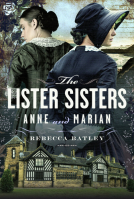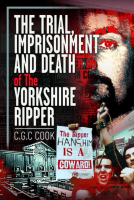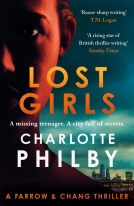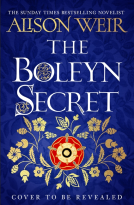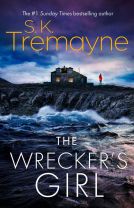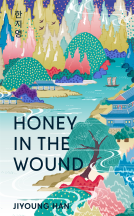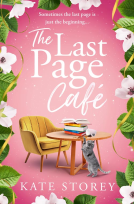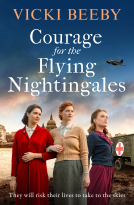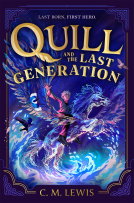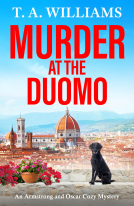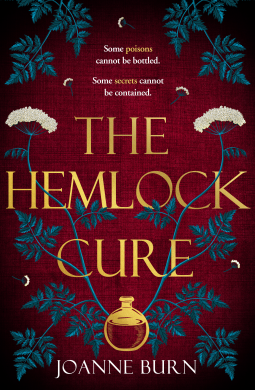
The Hemlock Cure
"A beautifully written story of the women of Eyam" Jennifer Saint, author of ARIADNE
by Joanne Burn
This title was previously available on NetGalley and is now archived.
Send NetGalley books directly to your Kindle or Kindle app
1
To read on a Kindle or Kindle app, please add kindle@netgalley.com as an approved email address to receive files in your Amazon account. Click here for step-by-step instructions.
2
Also find your Kindle email address within your Amazon account, and enter it here.
Pub Date 10 Feb 2022 | Archive Date 10 Feb 2022
Little, Brown Book Group UK | Sphere
Talking about this book? Use #TheHemlockCure #NetGalley. More hashtag tips!
Description
The entrancing historical read perfect for readers of Hamnet and The Manningtree Witches
'Vivid and poetic' JENNIFER SAINT
'Mesmerizing' ROSIE ANDREWS
'Page-turning' SUSAN STOKES-CHAPMAN
'Beautiful' ANNIE GARTHWAITE
'Exquisitely written' SONIA VELTON
'Fascinating' LIZ HYDER
'Heart-wrenching' REBECCA F. JOHN
'Wholly original' SARAH BURTON
'Exquisite' EMMA CARROLL
'Bewitching' ROZ WATKINS
'Spellbinding' NIKKI MARMERY
It is 1665 and the women of Eyam keep many secrets.
Isabel Frith, the village midwife, walks a dangerous line with her herbs and remedies. There are men in the village who speak of witchcraft, and Isabel has a past to hide. So she tells nobody her fears about Wulfric, the pious, reclusive apothecary.
Mae, Wulfric's youngest daughter, dreads her father's rage if he discovers what she keeps from him. Like her feelings for Rafe, Isabel's ward, or that she studies from Wulfric's forbidden books at night.
But others have secrets too. Secrets darker than any of them could have imagined.
When Mae makes a horrifying discovery, Isabel is the only person she can turn to. But helping Mae will place them both in unspeakable peril.
And meanwhile another danger is on its way from London. One that threatens to engulf them all . . .
Based on the real history of an English village during the Great Plague, The Hemlock Cure is an utterly beguiling tale of fear and ambition, betrayal, self-sacrifice and the unbreakable bond between two women.
Available Editions
| EDITION | Other Format |
| ISBN | 9780751581928 |
| PRICE | £14.99 (GBP) |
| PAGES | 336 |
Average rating from 180 members
Featured Reviews
What could have been just another book about how witches lived in the 17th century turned out to be quite satisfying.
"The Hemlock Cure" is based on actual events that took place in a small English village in 1666, during the Great Plague, when the village virtually quarantined itself in an attempt to stem the growing number of deaths from the plague. Mae lives with her father, the village apothecary, helping him to produce his medicines while hoping that he will finally accept her as his apprentice. At the same time, she studies with Isabel, the village midwife and "wise-woman" whose knowledge of herbs and natural remedies, has helped many women.
Isabel shares a mysterious history with Mae's father, and she lives in fear of what might befall Mae while living under his roof.
To reveal more would spoil a many-layered and multi-threaded plot, which at first seems a bit random, but which slowly builds into a glorious picture of life in a small village, and the trials and tribulations of those who practiced medicine in the middle ages. We also take a trip to London, where the sights and smells of the plague-ridden city are drawn to perfection. The book also examines the nature of family, relationships, and religion. There's also a neat twist, in the shape of the narrator of the story.
The book should appeal to fans of Michelle Paver and Stacey Halls, and readers of A Secret History of Witches by Louisa Morgan. Definitely worth a look.
 Rosemary S, Librarian
Rosemary S, Librarian
It can be dangerous to be a knowledgable woman in the 17th century. Isabel Frith is the village midwife and she knows well the power to be found in nature, but she also knows men in the village whisper about witchcraft, so she is very careful to hide her talents and to keep her concerns about the local apothecary, Wulfric Mae, Wulfric’s daughter also fears the apothecary, who would be fiercely angry if he knew she studied from his books and had feelings for Isabel’s ward, Rafe. When Mae uncovers a terrible secret, Mae is the only one she can confide in, but confronting the evil could cost both women their lives. This is an intense, well researched book about ignorance, prejudice and fear; something sadly, not confined to the past
 Mary H, Reviewer
Mary H, Reviewer
A good historical novel about Eyam, and London in the Plague Times., in the seventeenth century. This novel brings history to life, and centres mainly upon the relationship between Isabel and Mae. It is a complex plot, and I shall not reveal any more of it, for fear of spoiling it. However I would recommend it as a good read. Thank you to netgalley and the publishers for giving me a copy of the book.
 Reviewer 774133
Reviewer 774133
The Hemlock Cure by Joanne Burn
Loosely based on a true story.
( Eyam is a Derbyshire village that closed itself off to protect the area during the 17th century when the plague came to the village )
The story is about the village midwife , Isabel Frith with the knowledge of natural potions to help the women and the wider community of Eyam. She has an ally in Mae , the apothecarys daughter , but to some they could be working with the dark forces.
A brilliant book about people trying to find answers to questions and things they don't understand.
I love it when an author brings historic fact and adds fiction to enhance a story.
 Denise S, Reviewer
Denise S, Reviewer
Incredible book, couldn’t put it down! Extremely well written to the point you feel you are there with them. Deserves to be a best seller.
A well thought out and intricate plot and one in which I really enjoyed. Great variety of the points of view in which the story is told. Also, it does time hop slightly so keep an eye out. Love the threads of witchcraft coming through on this. Powerful, clever, surprising.
Set in 1665, this is a fictionalised part of the story of the plague village, Eyam, in the Peak District. This is a village that closed its borders to people to stop the plague spreading further. Isabel Frith is the local midwife, but runs the risk of being thought a witch because of her use of herbs and potions. She draws the hatred of Wulfric, the village apothecary, who is also somewhat of a religious zealot. His daughter, Mae, dreams of becoming his apprentice but will never be allowed, as she is just a girl.
This is a powerful, if slightly slow, read. It features real inhabitants of Eyam, alongside the fictional families. And while it’s about the plague, it’s more the story of the time, where men’s word was law, religion played a great part in every ones lives, and women had no rights. It’s a very well researched and written story, bringing to life the people and places of that era, in Eyam but also in London; you can almost smell the stench of the city. A well crafted read.
Thanks to NetGalley and the publisher for the opportunity to read and review this book.
 Mary E, Reviewer
Mary E, Reviewer
Beautifully written but a dark and dismal tale. Perhaps it is all too close to jhome during this time of the Covid Pandemic.
The author paints a vivid picture of life in the mid 1600 - not only in small villages but also big cities. The research is excellent even if the story it tells is of pain, sorrow, ignorance and grief. Perhaps an author in the future will tell a similar tale of today’s woes.
Did I enjoy it? Not sure but it will live with me for a time……
 Annie L, Reviewer
Annie L, Reviewer
What a joy this Book was to read , because amid it's Characters of whom only the Main one's were Fictitious it gave a whole new light on what it must have been like especially for Women to live in these times & more so during the Plague in the Historic Peak District Village of Eyam ! Here under the leadership of the rector, Rev. William Mompesson and his predecessor, the Rev. Thomas Stanley, the villagers agreed to accept strict quarantine to prevent the spread of the disease beyond the village boundary, & other Villages left supplies at the Boundaries to sustain those within, & the Villagers even buried their own Dead when the Gravedigger Marshall Howe succumbed to the Plague , he actually survived unlike his wife & baby son. Out of the 800 villagers 260 died from this dreadful pestilence , we have visited Eyam & even when full of tourists it has a strange eerie atmosphere .I highly recommend this book, & dare any reader not to be greatly moved when reading it . #FB, #NetGalley, #Instagram, #GoodReads, #Amazon.co.uk, #<img src="https://www.netgalley.com/badge/c566f42be23a0e25d120e78a3454e2d427c4beee" width="80" height="80" alt="50 Book Reviews" title="50 Book Reviews"/>, #<img src="https://www.netgalley.com/badge/ef856e6ce35e6d2d729539aa1808a5fb4326a415" width="80" height="80" alt="Reviews Published" title="Reviews Published"/>, #<img src="https://www.netgalley.com/badge/aa60c7e77cc330186f26ea1f647542df8af8326a" width="80" height="80" alt="Professional Reader" title="Professional Reader"/>.
When I first picked up this book I made assumptions as to how the story would play out - a village is faced with the outbreak of a terrible illness and the women who help to provide treatments to the sick are faced with accusations of witchcraft. I was pleasantly surprised with how the story went, and I think this helps the book to stand out amongst others of the genre.
Mae is keen to learn the ways of being an apothecary but her father, Wulfric, is a pious man who fears that the devil is lurking in the very heart of his home. The narration by Mae’s sister, Leah, is interspersed with excerpts from Wulfric’s diary and these snippets help to provide an insight into his behaviour, as well as revealing key elements of the story.
The book is well written and the characters are all fleshed out and believable. With some interesting twists and turns the book keeps your interest to the end, and you really do feel for Mae and her situation. Set during the plague in the town of Eyam, who chose to quarantine to halt the spread of the illness to Sheffield, there are obviously parallels with our recent experiences of lockdown. Maybe because of recent events the author didn’t want to dwell on this too much, but I felt more could have been made of this particular plot point.
One for fans of historical fiction, this is an entertaining read that will see you through the dark nights of winter!
Thank you to NetGalley and the publisher for an advance copy in exchange for an honest review.
 Rachel F, Reviewer
Rachel F, Reviewer
The Hemlock Cure by Joanne Burn is an excellent and fascinating historical fiction that gives the reader a glimpse of what it would have been like to have been present in England during the plague of 1666. Truly engaging.
This is such a unique, intricate, complex, yet addictive novel. I don’t think I have read anything quite like it.
The author has taken her painstaking research and created a multi-layered narrative to take the reader into the village of Eyam during the all-encompassing plague of 1666. Here we get the glimpses of life for those involved within this sequestered village from an array of angles in the voice of a deceased girl. The reader delves into the lives at one point of a midwife, apothecary, those young and old, male and female. We see the dynamics of societal, gender, occupational, and religious relationships and ideals within these characters. We see the contraints, the double standards, the superstitions, the misconceptions, and the wrongs/rights of those that live within the village at this time. We can see how these inhabitants are treated by their family members and by one another. We also see how medicine, religion, and the supernatural all play a part in how the Black Death is perceived, understood, and treated.
There are twists and turns, developments, suspense, and a full character cast that all add together to make this novel one of a kind and truly immersive. I whole heartedly recommend this historical fiction that I truly enjoyed.
5/5 stars
Thank you NG and Little, Brown Book Group UK for this wonderful arc and in return I am submitting my unbiased and voluntary review and opinion.
I am posting this review to my GR and Bookbub accounts immediately (as of 9/13/21 no BB listing has been created) and will post it to my Amazon, Instagram, and B&N accounts upon publication on 2/10/22.
Based in the plague village of Eyam, which quarantined itself from the rest of the world during the plague to prevent contamination spreading to neighbouring towns & villages, this is the story of Mae, the apothecary’s daughter.
The story is told by the ghost? of Leah & their father, the village apothecary Wulfric’s, diary.
The main characters all have their secrets as we flit from Mae, to Wulfric’s diary, to Isobel (village midwife & friend to Mae’s passed mother, & her husband Johan who leaves to visit his friend in London.
I did feel at times there were a few too many characters whose stories detracted unnecessarily (Katarina for example) & would have loved to have had more details about the village during this time.
I loved the real characters interspersed amongst the story & the description of the herbs, tonics & medicines of the time.
I enjoyed the story & would rate it 4/5
Thanks to NetGalley for my copy.
 Alison C, Librarian
Alison C, Librarian
I’ve always been fascinated by the Black Death plague of 1666 ever since I learnt about it aged about 8. This book takes the back drop of the village of Eyam, where the villagers isolated itself in order to save neighbouring towns from the plague but adds in another story of a young girl and imagines her life.
It is narrated by a dead girl, Leah, who flits from scene to scene and tells the story from various perspectives but mostly from that of her sister, Mae. They were/are daughters of Wulfric, the town’s apothecary and now a widower after both Leah and his wife, Isabel died.
He is a God fearing and superstitious man with a specific fear of witches and displeasing God due to the actions of his family. As such, he is particularly concerned by his wife’s best friend, Elizabeth, and her motherly interest in Mae.
Elizabeth is the town’s midwife, which in spite of sharing many of the tools of the apothecary, is perceived by Wulfric as an ungodly role as women should suffer as they give birth due to Eve’s original sin. There is therefore an interesting juxtaposition of two quite similar jobs.
The real concern for the reader and the ghostly narrator is Wulfric’s paternal authoritarian behaviour/domestic abuse of his remaining daughter. The plot focuses upon Elizabeth and her adopted son Rafe’s attempts to rescue Mae which become gradually more determined.
I enjoyed the book, it sounds a bit strange having the narrator as a dead character but it quickly felt natural. The setting was interesting, other social issues are focused upon in a thoughtful manner (I don’t want to say what as it’s a spoiler). If you enjoy historical novels then I would recommend the book.
The book is available in February 2022 and I received an ARC copy from Netgalley in return for an honest review.
 Jessica M, Educator
Jessica M, Educator
This story is set in the village of Eyam and is based on true events whereby the village went to great lengths to help save its population from the devastating effects of the plague. The storytelling is great and provides fantastic historical insight into a famous event in history, through fiction. I really enjoyed this book and recommend to anyone with any slight interest in this period of history.
 Helen N, Book Trade Professional
Helen N, Book Trade Professional
Beautifully written and structured, I loved the writing style and the story being told from different points of view. In a couple of places I found the tension almost unbearable. Based on true events during the Great Plague in the 17th century, where a small town shut itself off to avoid spreading the disease, the story is bleak but the descriptions are so vivid and atmospheric, it was easy to think you were actually there.
A really fascinating and unusual book.
 Heather R, Reviewer
Heather R, Reviewer
A gripping and well-written book, dealing with a fascinating period in history. I particularly liked the blend of fact and fiction.
SUCH A GOOD READ, history fiction at its finest, I am fascinated with the macabre and so books set around the plague are always a win for me and this was no different. It was dark and full of suspense and secrets. I loved it
 Alyson H, Reviewer
Alyson H, Reviewer
The Hemlock Cure is a gently moving story set during the year 1665-1666 in the village of Eyam, England. The plague has spread from London, carried in a shipment of clothing and has begun to spread amongst the population. With in these known facts Joanne Burn has placed the fictitious family of Wulfric, the village apothecary.
The social and religious relationships in the village are complex and we see how superstitions, misconceptions and strong beliefs influence the characters and their interactions with each other and with the threat brought by the plague. While medicine and cures have advanced during this period, religion and the supernatural still rule the day.
There are twists and turns in this intriguing story as people awaken to things that have been happening under their very noses. The detail and research that have gone into the writing of the text add layers of interest and authenticity and create a very readable historical novel.
With thanks to Netgalley and Little, Brown Book Group UK. for the opportunity to read an early copy of this book in return for an honest review.
 Reviewer 269013
Reviewer 269013
I really enjoyed this book.
As a child I went to Eyam many times and knew the plague story from early years. Today, just after the pandemic, reading about travel passports and quarantine, it really hits home!
The story is about more than the plague as the families battle their demons and it feels tense, real and well written.
It took me a few chapters to get into the story and to work out who belonged to which family but then I was hooked and throughly recommend it
 Jane D, Reviewer
Jane D, Reviewer
I found this an excellent read. The comparisons between the Black Death and recent events were compelling.
I loved the timeliness of this book set in the plague years in 16th Century northern England as a village decides to quarantine itself to prevent the spread of plague to larger local towns
This story itself has been told many times but the author of this book manages to find a fresh approach to the story by intertwining stories of feminism ,witchcraft and sexual freedom .
The quarantine cleverly adds stress and speed to the story as it becomes clear how this will effect many village members in different ways .It also strengthens the feeling of claustrophobia adding additional elements to the story
I was quickly invested in the characters and wanted to see them overcome their difficulties
The historical detail is beautifully wound into the narration and is believable and accurate
We all know so much more about pandemics having lived through covid 19 and I think this book will hold true for a lot of our own 21st century experiences.
I read an early copy on NetGalley Uk the book is published 10 February 2022 and I am sure will be a best seller
 Lesley N, Reviewer
Lesley N, Reviewer
About 20 years ago I read a novel about Eyam, the Derbyshire Plague Village. This is altogether a darker and more superstitious tale of this village in 1665/6. There are glimpses of earlier times through diary entries and the observations of the (dead) narrator which help to explain "current" views and relationships.
This is a time when some people's views of medicines were not far removed from 400 years previously, which makes the advances of the subsequent 350 years or so even more amazing. It was also a time when religion was a much bigger and more important part of everyday life, and people still believed in witches.
Wulfric is the village apothecary who lives in a bare and soul less cottage with his daughter Mae. "The Hemlock Cure" is the tale of Mae's fight for survival during times made even harder by the arrival of the plague in Eyam.
This book is at times a challenging read but is well worth persevering with.
Thanks to Net Galley and the publishers for the opportunity to review this book.
 Helen P, Librarian
Helen P, Librarian
My parents came from the Buxton area. I was taken to Eyam as a young child and was shown the graves of the plague victims. This powerful memory has stayed with me. I particularly remember the bravery of the villagers who stayed in Eyam to stop the plague spreading. I have read “The Parcel of Patterns” which I found moving. However, “The Hemlock Cure” not only shows the horror of living with a deadly, highly contagious illness but it gives us a real insight into the people who lived in the village; some are real people and some are not. This book is so relevant to our current situation of living with covid 19 with neighbours turning on neighbours while others show such kindness. Today, we have modern medicine but in the days of the plague, the people relied on herbalists. It was a heartbreaking story told by the dead sister of one of the book’s main characters, Mae. Their father is a religious fanatic. I don’t want to give spoilers but there are many twists and turns which involve midwifery and the way women were treated in these times. A very well researched and well written story which I highly recommend. Thank you Netgalley for allowing me to read and review this book.
 jane l, Educator
jane l, Educator
Fascinating historical fiction from a writer who just breathes love of words. I frequently paused just to re-read a sentence or even a phrase (mouse-soft!) and I liked the complexity of the story and characters a lot. I would definitely look out for more by Joanne Burn.
I have always been fascinated with the events of the plague and especially what took place in the village of Eyam. When I saw there was a book based around these events I knew I had to read it.
The Hemlock Cure was a deeply fascinating story and one that I got through in only 2 days. If I wasn’t reading it, I felt bereft. I felt the way the story was narrated was unique in that we were following the story of Mae but told from the point of view of her dead sister Leah. There were also snippets of their Dads diary Wulfric which added much needed insight into his personality.
I gave this book 4 stars due to its uniqueness, the ability to keep me hooked and because it was just a fantastically written book. If anything I would of liked it to be longer!
I will definitely be picking up another book by this author in the future.
It's the year 1665/1666, time of Great Plague and in the little village of Eyam people have many secrets, especially women, women with knowledge to heal as is midwife/wise-woman Isabel. These women are in great danger to be accused as witches.
Isabel also tries to help Mae with her knowledge, bright young woman who in secret reads father's apothecary books and wants to be accepted as his apprentice. But Wulfric is a rigorous and tormented man with dark secrets on his own. In time becomes obvious that Mae is not safe in her home.
Tensions grow and it seems that there is only one cure. Hemlock cure.
The Hemlock Cure is based on actual events that took place in a small English village in 1666, during the Great Plague, when the village virtually quarantined itself in an attempt to stem the growing number of deaths from the plague.
The narrative is a reflection of a life in a 17th century. Influence of the religion and patriarchal society, mixed with fear of gruesome disease and also secret knowledge and education of women.
Dark and gripping, the reader cannot put the book down.
The story of The Hemlock cure takes place with the great plague of London in the background. The story takes place between 1660 -1666 and it is party a fiction with a strong dose of non-fiction. We have the main character Mae who is extremely gift in the knowledge of plant medicine but is abused by her father who is a hypocrite with his false facade of piety and righteousness justified by him in the name of lord. And there is Isabel who is the motherly figure to Mae and helps her in every way. Soon Mae gets know about a terrible truth that takes away her footing and nudges her to her core. The narration is outstanding. The facts all amazing and the plot ,extraordinary with amazing build up. I thoroughly enjoyed reading it. Thank you to the author and publishing house for accepting my request or else I'd have missed a gem of a book.
 jean luc e, Librarian
jean luc e, Librarian
A captivating historical novel set in the village of Eyam in the Peak District National Park (Derbyshire) during the somber years of the Great Plague at the beginning of the 1660s.
A tale of family secrets, religious madness, poison and survival among the inhabitants of a small community totally isolated by the raging pandemic.
Cleverly plotted and blessed with a cast of unforgettable characters this magnificent novel opens a very fascinating window on the bleakness and desolateness of rural England during the first chaotic years of the Stuart Restoration.
A marvellous fictional tapestry that deserves to be enjoyed without any moderation whatsoever!
Many thanks to Netgalley and Little Brown (UK) for this terrific ARC
 Viv R, Reviewer
Viv R, Reviewer
I enjoyed ‘The Hemlock Cure’ by Joanne Burn. I have read a few novels set in Eyam during the plague but this was one of the best.
A book of witches, of an English village in 1666, a plague and of real events which happened in this time. All this makes for a great book which has been so well researched and you can feel the intenseness in this book in every page.
It brings together religion, superstition, spiritualism, sickness, healing and of course family and personal relationships. The characters are very interesting and I enjoyed the connection between Mae and Isabel as well as Mae's father.
It was at times a bit slow going but all in all it is a very interesting read with many layers, twists and turns and a great storyline. It took me in to a world I have never known and showed me what it was like to live in those times now long gone.
A multi-faceted story of one household (mainly), one village during the plague
which beset England in the middle of the 17th century. Prejudice and suspicion, religion and misogyny underpin the novel and the plight of its characters. The dual timeline enfolds thanks to our narrator, in addition to diary entries. The sparkling prose and detailed drawing of characters make for an engrossing, compelling read, masterfully told.
The ending was simple and understated - a possible weakness in my opinion - but full of hope. Here’s to successful futures for our strong, female protagonists.
This story would transfer beautifully to film. Let’s hope that happens.
Set in the notorious plague town of Eyam, Joanne Burn’s novel The Hemlock Cure evokes the quiet horror of a village struck down with the Black Death.
The plot follows Mae as she endeavours to further her medical education under the cruel eye of her devoutly religious father. We follow the villagers of Eyam as they deal with the complexities the plague brings to their lives.
While much happens within these pages it’s a tense and slow burn with deep rooted history between the characters motivating their actions.
Interestingly, the novel is narrated by Mae’s sister who has passed away before the events of the novel. It is a fascinating narration choice and one I enjoyed in the moments when it was most relevant. I sometimes found myself forgetting this narration choice and remembering only when the writing specifically reminded me which was sometimes jarring. However, it doesn’t overshadow the novel and for some readers I think this will add depth to the narration.
Overall, I really enjoyed the atmosphere and characters in this novel.
 louisa t, Reviewer
louisa t, Reviewer
It would seem the people of Eyam in the 1600s had more sense than some current governments,and placed themselves under strict quarantine whilst the plague rampage.
This is the fact that the story is woven around.
Throw in talk of witchcraft,herbal cures,religion,and some sinister goings on,and you've got a really good story.
The book was filled with characters I was rooting for,Isabel,Mae and Rafe particularly.
Well narrated from multiple viewpoints,and diary entries,it gave a perfectly rounded story.
Very very enjoyable.
A good historical novel about Eyam, and London in the Plague Times., in the seventeenth century. This novel brings history to life and centres mainly upon the relationship between Isabel and Mae.
In the beginning, I thought it might be a little too in-depth but as the story went on, I became more involved in the story, very enjoyable,
 Heather N, Librarian
Heather N, Librarian
Having visited Elam I was really excited to read this book based on characters and events during the Plague. It is very atmospheric and gives an excellent sense of how it was to live in those times, especially as a woman. Life was hard and joy was rare. A really interesting read made all the more vivid knowing the places mentioned.
 Carlie B, Reviewer
Carlie B, Reviewer
Having visited Eyam several times and studied it's historic story of how the village famously shut itself off during the plague of 1666, I was immediately intrigued by this novel.
The author has done a wonderful job of researching the period of history, and many character's are taken from the historic village, which she notes at the back of the book. However, this did make it difficult reading and it took me a while to really get into the book and the characters.
Centring round the women of the village,the novel touches on the ever present fear of midwives and 'wise' women of being accused of witchcraft. There was definitely an undercurrent of evil throughout the book and by the end, I was definitely rooting for the women of the story to succeed!
All in all, I did enjoy reading this and I thank the author, publisher and NetGalley for receiving an ERC in exchange for an honest review.
I was very invested in this story, being a Derbyshire lass and having visited Eyam and felt the haunting atmosphere of the "plague village" that legend says sacrificed themselves for the sake of surrounding areas. I'm reality, I'm sure there were many that had little choice in the matter as they were pretty destitute and had nowhere to go, particularly when surrounding cities and communities effectively blocked anyone passing out of the village. However, this is more a story about the villagers within the community, particularly the village midwife and the apothecarist and his family, both central to the medical needs of the village.
At times in this book I felt the narrative was disjointed, it took some time for me to grasp who the narrator was and between that, diary entries and other narratives it didn't just flow quite as well to me. There was a build up of tension and fear which blended well with the sense of foreboding over the plague. I also enjoyed reading about the use of tonics, tinctures and herbal medicine to treat ailments and how there is still much of both that, and the childbirth practices, in use today but delivered as accepted medicine rather than "witchcraft" as it was seen by some of a religious belief back then.
It has a realism that was easy to visualise and I feel it highlights how difficult the lives of women in particular was despite their intelligence and skills.
Perhaps it's a story I need to reread to fully appreciate all of the characters and what was happening between them all again.
🌟B O O K R E V I E W🌟
The Hemlock Cure - Joanne Burn
𝐈𝐭 𝐢𝐬 𝟏𝟔𝟔𝟓 𝐚𝐧𝐝 𝐭𝐡𝐞 𝐰𝐨𝐦𝐞𝐧 𝐨𝐟 𝐄𝐲𝐚𝐦 𝐤𝐞𝐞𝐩 𝐦𝐚𝐧𝐲 𝐬𝐞𝐜𝐫𝐞𝐭𝐬.
𝐈𝐬𝐚𝐛𝐞𝐥 𝐅𝐫𝐢𝐭𝐡, 𝐭𝐡𝐞 𝐯𝐢𝐥𝐥𝐚𝐠𝐞 𝐦𝐢𝐝𝐰𝐢𝐟𝐞, 𝐰𝐚𝐥𝐤𝐬 𝐚 𝐝𝐚𝐧𝐠𝐞𝐫𝐨𝐮𝐬 𝐥𝐢𝐧𝐞 𝐰𝐢𝐭𝐡 𝐡𝐞𝐫 𝐡𝐞𝐫𝐛𝐬 𝐚𝐧𝐝 𝐫𝐞𝐦𝐞𝐝𝐢𝐞𝐬. 𝐓𝐡𝐞𝐫𝐞 𝐚𝐫𝐞 𝐦𝐞𝐧 𝐢𝐧 𝐭𝐡𝐞 𝐯𝐢𝐥𝐥𝐚𝐠𝐞 𝐰𝐡𝐨 𝐬𝐩𝐞𝐚𝐤 𝐨𝐟 𝐰𝐢𝐭𝐜𝐡𝐜𝐫𝐚𝐟𝐭, 𝐚𝐧𝐝 𝐈𝐬𝐚𝐛𝐞𝐥 𝐡𝐚𝐬 𝐚 𝐩𝐚𝐬𝐭 𝐭𝐨 𝐡𝐢𝐝𝐞. 𝐒𝐨 𝐬𝐡𝐞 𝐭𝐞𝐥𝐥𝐬 𝐧𝐨𝐛𝐨𝐝𝐲 𝐡𝐞𝐫 𝐟𝐞𝐚𝐫𝐬 𝐚𝐛𝐨𝐮𝐭 𝐖𝐮𝐥𝐟𝐫𝐢𝐜, 𝐭𝐡𝐞 𝐩𝐢𝐨𝐮𝐬, 𝐫𝐞𝐜𝐥𝐮𝐬𝐢𝐯𝐞 𝐚𝐩𝐨𝐭𝐡𝐞𝐜𝐚𝐫𝐲.
𝐌𝐚𝐞, 𝐖𝐮𝐥𝐟𝐫𝐢𝐜'𝐬 𝐝𝐚𝐮𝐠𝐡𝐭𝐞𝐫, 𝐝𝐫𝐞𝐚𝐝𝐬 𝐡𝐞𝐫 𝐟𝐚𝐭𝐡𝐞𝐫'𝐬 𝐫𝐚𝐠𝐞 𝐢𝐟 𝐡𝐞 𝐝𝐢𝐬𝐜𝐨𝐯𝐞𝐫𝐬 𝐰𝐡𝐚𝐭 𝐬𝐡𝐞 𝐤𝐞𝐞𝐩𝐬 𝐟𝐫𝐨𝐦 𝐡𝐢𝐦. 𝐋𝐢𝐤𝐞 𝐡𝐞𝐫 𝐟𝐞𝐞𝐥𝐢𝐧𝐠𝐬 𝐟𝐨𝐫 𝐑𝐚𝐟𝐞, 𝐨𝐫 𝐭𝐡𝐞 𝐟𝐚𝐜𝐭 𝐭𝐡𝐚𝐭 𝐬𝐡𝐞 𝐬𝐭𝐮𝐝𝐢𝐞𝐬 𝐟𝐫𝐨𝐦 𝐖𝐮𝐥𝐟𝐫𝐢𝐜'𝐬 𝐛𝐨𝐨𝐤𝐬 𝐚𝐭 𝐧𝐢𝐠𝐡𝐭.
𝐁𝐮𝐭 𝐨𝐭𝐡𝐞𝐫𝐬 𝐡𝐚𝐯𝐞 𝐬𝐞𝐜𝐫𝐞𝐭𝐬 𝐭𝐨𝐨. 𝐒𝐞𝐜𝐫𝐞𝐭𝐬 𝐝𝐚𝐫𝐤𝐞𝐫 𝐭𝐡𝐚𝐧 𝐚𝐧𝐲 𝐨𝐟 𝐭𝐡𝐞𝐦 𝐜𝐨𝐮𝐥𝐝 𝐡𝐚𝐯𝐞 𝐢𝐦𝐚𝐠𝐢𝐧𝐞𝐝.
𝐖𝐡𝐞𝐧 𝐌𝐚𝐞 𝐦𝐚𝐤𝐞𝐬 𝐚 𝐡𝐨𝐫𝐫𝐢𝐟𝐲𝐢𝐧𝐠 𝐝𝐢𝐬𝐜𝐨𝐯𝐞𝐫𝐲, 𝐈𝐬𝐚𝐛𝐞𝐥 𝐢𝐬 𝐭𝐡𝐞 𝐨𝐧𝐥𝐲 𝐩𝐞𝐫𝐬𝐨𝐧 𝐬𝐡𝐞 𝐜𝐚𝐧 𝐭𝐮𝐫𝐧 𝐭𝐨. 𝐁𝐮𝐭 𝐡𝐞𝐥𝐩𝐢𝐧𝐠 𝐌𝐚𝐞 𝐰𝐢𝐥𝐥 𝐩𝐥𝐚𝐜𝐞 𝐭𝐡𝐞𝐦 𝐛𝐨𝐭𝐡 𝐢𝐧 𝐮𝐧𝐢𝐦𝐚𝐠𝐢𝐧𝐚𝐛𝐥𝐞 𝐩𝐞𝐫𝐢𝐥.
𝐀𝐧𝐝 𝐦𝐞𝐚𝐧𝐰𝐡𝐢𝐥𝐞 𝐚𝐧𝐨𝐭𝐡𝐞𝐫 𝐝𝐚𝐧𝐠𝐞𝐫 𝐢𝐬 𝐨𝐧 𝐢𝐭𝐬 𝐰𝐚𝐲 𝐟𝐫𝐨𝐦 𝐋𝐨𝐧𝐝𝐨𝐧. 𝐎𝐧𝐞 𝐭𝐡𝐚𝐭 𝐭𝐡𝐫𝐞𝐚𝐭𝐞𝐧𝐬 𝐭𝐨 𝐞𝐧𝐠𝐮𝐥𝐟 𝐭𝐡𝐞𝐦 𝐚𝐥𝐥 . . .
I read this as my most anticipated read for #netgalleynovember and I wasn’t disappointed!
‘𝐎𝐧 𝐭𝐡𝐚𝐭 𝐜𝐚𝐫𝐭…𝐢𝐬 𝐚 𝐛𝐮𝐧𝐝𝐥𝐞 𝐨𝐟 𝐜𝐥𝐨𝐭𝐡 𝐚𝐧𝐝 𝐮𝐬𝐞𝐝 𝐜𝐥𝐨𝐭𝐡𝐢𝐧𝐠 𝐟𝐫𝐨𝐦 𝐚 𝐝𝐫𝐚𝐩𝐞𝐫’𝐬 𝐬𝐡𝐨𝐩 𝐢𝐧 𝐂𝐡𝐞𝐚𝐩𝐬𝐢𝐝𝐞…𝐅𝐥𝐞𝐚𝐬 𝐫𝐞𝐬𝐭 𝐢𝐧 𝐭𝐡𝐞 𝐰𝐞𝐟𝐭 𝐚𝐧𝐝 𝐰𝐞𝐚𝐯𝐞.
𝐀𝐧𝐝 𝐢𝐭 𝐭𝐫𝐚𝐯𝐞𝐥𝐬 𝐭𝐨 𝐄𝐲𝐚𝐦.’
Oh this is just a fantastic book! Plague, religion, fear, love and oh my word I was rooting for the women in this story.
‘𝐒𝐡𝐞 𝐢𝐬 𝐚 𝐦𝐢𝐝𝐰𝐢𝐟𝐞, 𝐚 𝐰𝐨𝐦𝐚𝐧. 𝐒𝐡𝐞 𝐢𝐬 𝐧𝐨𝐭 𝐚 𝐩𝐡𝐲𝐬𝐢𝐜𝐢𝐚𝐧; 𝐬𝐡𝐞 𝐢𝐬 𝐧𝐨𝐭 𝐚𝐧 𝐚𝐩𝐨𝐭𝐡𝐞𝐜𝐚𝐫𝐲. 𝐒𝐡𝐞 𝐫𝐞𝐥𝐢𝐞𝐬 𝐨𝐧 𝐭𝐡𝐞 𝐭𝐮𝐫𝐧𝐢𝐧𝐠 𝐨𝐟 𝐛𝐥𝐢𝐧𝐝 𝐞𝐲𝐞𝐬.’
It is difficult to read about how women were treated and perceived in these times. With modern eyes, it is easy to be damning of how people behaved and what they thought and believed, but in some ways it is no different now, when you look at the variety of opinions on Covid and what people believe regarding that disease.
‘𝐌𝐚𝐞 𝐬𝐞𝐞𝐬 𝐡𝐨𝐰 𝐡𝐞 𝐥𝐞𝐭𝐬 𝐢𝐭 𝐠𝐨….𝐡𝐨𝐰 𝐛𝐨𝐥𝐬𝐭𝐞𝐫𝐞𝐝 𝐡𝐞 𝐡𝐚𝐬 𝐛𝐞𝐞𝐧 𝐛𝐲 𝐭𝐡𝐞 𝐩𝐥𝐚𝐠𝐮𝐞 𝐭𝐢𝐠𝐡𝐭𝐞𝐧𝐢𝐧𝐠 𝐢𝐭𝐬 𝐠𝐫𝐢𝐩 𝐨𝐧 𝐭𝐡𝐞 𝐯𝐢𝐥𝐥𝐚𝐠𝐞.’
Witchcraft, spells and religious fervour all seem extreme to us now, but it must have been hugely frightening at the time with people, particularly women living in fear. Let alone how death could take you so easily without our modern day medicine.
‘𝐎𝐟 𝐜𝐨𝐮𝐫𝐬𝐞 𝐈’𝐦 𝐚𝐟𝐫𝐚𝐢𝐝 𝐨𝐟 𝐡𝐢𝐦. 𝐘𝐨𝐮 𝐰𝐨𝐮𝐥𝐝 𝐛𝐞 𝐚𝐟𝐫𝐚𝐢𝐝 𝐨𝐟 𝐡𝐢𝐦.’
This book was just spellbinding, it is written so well, I could really feel the fear that these people felt, my heart was thumping and I raced through this, desparate to know how it ended for these people, especially Mae and Isabel.
Captivating, wonderful, perfect!
✩✩✩✩✩
Thanks to #netgalley for my copy of this book.
 Book B, Reviewer
Book B, Reviewer
A novel of historical fiction inspired by real life
Eyam in Derbyshire really was known as the Plague village
Mae in the novel narrates life in the village which shut itself off from the outside world to try and save themselves and others from the deadly plague. Social distancing and lock down 1660 style. Shame this is a lesson history does not seem to have learned. Not sure who would be so selfless today as to lock the entire community in to protect others...
This is also a story about women at that time and the suspicion that many would be suspected of witchcraft just because they tried to create alternative medicines. Mae was a great narrator and the novel felt like a breath of fresh air mixing fact and fiction.
 Leanne N, Educator
Leanne N, Educator
I was given an ARC copy of The Hemlock Cure in exchange for an honest review of the book. Set in the plague-ridden and locked down village of Eyam during the 1660s the novel highlights the historical persecution of women and girls believed to be witches. I enjoyed the vivid characterisations of the key players in this book and the pathos inspired towards the victims of the superstitions and familial brutality of the age.. For all the violence and dramatic tension throughout, I have to admit to being a little disappointed with the ending, which I felt would have been a stroke of genius had the outcome been more ‘miserable’. Overall, though, a good read.
 Anita W, Reviewer
Anita W, Reviewer
This is a powerful story with a really strong sense of time and place. It’s woven around fact and is rich in historical detail which makes it a compelling read. Set mainly in Eyam, a small village in Derbyshire renowned because it tried to isolate itself from the plague by cutting itself off from the outside world. There are scenes in London and the depiction of the effects of plague are memorable and vivid.
Joanne Burn explores a number of themes in a story which is packed with unexpected twists. The role of women and witchcraft, religious beliefs, herbalism, divided loyalties and more. It’s beautifully written and I found the descriptive passages and dialogue really flowed, making this a page turning read. I’d definitely look for more from this author.
My thanks to the publisher for a review copy via Netgalley.
Set against the rural backdrop of the suspicious times the plague of the 1600s (lots of parallels to our world in 2021!) we meet Mae who lives alone with her mercurial father while secretly being taught to work with herbs and remedies by her late mum's friend. When the plague arrives in their village, the pace doesn't pick up - it's a bit of a slow burn read and one to enjoy in the winter months. I enjoyed the use of Maes late sister as the narrator and the references to herbs. Painstakingly researching and written.
"The Hemlock Cure" had me wiping away tears one minute and uttering some choice profanities the next. Mae is a character that you can't help but like, and most of the book is spent urging her to... well, read the book (no spoilers). This is a beautifully written story that has you walking beside the characters living their every day lives in unusual circumstances. I loved this book.
My thanks to the author, publisher, and NetGalley. This review was written voluntarily and is entirely my own, unbiased, opinion.
I enjoyed this piece of historical fiction; it's set against the back drop of the plague and is based on some true events - the village of eyam sealing itself off for example. It explores historical apothecary, witchcraft and the roles of women. It's well paved, interesting and informative. The characters are well developed and it's a good length.
Very enjoyable book. Beautiful writing - though I found it a little confusing at first. The 'I' character (Leah) seemed to suddenly pop up from time to time, rather than being clearly there throughout. We were always in her point of view but this was not always as obvious as perhaps it could have been. This is a minor point, however, in a fascinating novel.
Kept me reading well into the night.
At a time when we are suffering lockdowns and quarantine due to Covid, this novel focuses on the self imposed lockdown of the Derbyshire villagers of Eyam which in the 17th century closed of their village to everyone. No-one could enter or leave.
But the novel is much more than that, telling the story of the Apothecary Wulfric and his Daughter Mae. The narrative is told by Mae's deceased sister Leah. Suspicions about witchcraft within his family and the local midwife Isobel have made Wulfric a cruel father and Mae suffers under his rule..
I have read other books about the plague snd Eyam and this one didn't disappoint. In the authors notes she writes about how many villagers died, but without their restrictions it could gave been many more.
I would like to thank Netgalley and publishers for the opportunity to read this advanced copy. This review is based on my own opinions
 Educator 484559
Educator 484559
There was lots to enjoy about this book. I was familiar with the story of Eyam, so was a little concerned it might be treading old ground, but there were several interesting themes to follow - attitudes to male and female health care providers and the religious turmoil of the time, to name just a couple. The character were engaging - in fact, my only criticism of the book is that the back stories of Johan, Isabel and Katarina's were severely under-developed. They were fascinating and I would have loved to have known more of them. A very enjoyable book, I'd recommend it and would definitely read more by this author.
This was a really interesting historical fiction story during the 17th century. This story focuses on Mae and Isabel. I liked the plot and the deep history that is built to create a full and satisfying story! I thought the historical information was great, and the author clearly did a ton of research to create this time and place. I really enjoyed this one!
The Hemlock Cure is set during a time of real events when the Great Plague was ravaging through England in 1665. There have been numerous books around the topic of women/witchcraft/herbal remedies set in the 16th and 17th centuries. As a result, it takes a special novel to rise above the variety of books available and to ensure that it can be sufficiently unique to hold the attention of the reader.
One of the more unusual aspects of this story is that our narrator is the deceased sister of the central character Mae. Mae herself, is living with her father, the village apothecary and helping him with his work. She hopes that he will eventually come to accept her as his apprentice. She is also studying with the village midwife (and wise woman) Isabel, the village midwife. Many of the villagers are keepingg secrets and as fears of the plague grow daily, the people find themselves turning against each other and soon Mae finds that there is only one person that she can reply on.
This is a multi-layered and entertaining story. I was a little concerned about reading this tale in the light of the corona virus pandemic as I felt that I might not be able to enjoy the storyline but there is much to savour here with complex and well-rounded characters, each with their own secrets and fears.
 Karen K, Reviewer
Karen K, Reviewer
I have to say, this book really surpassed expectations. Set in Eyam, Derbyshire, in 1666, the story revolves around the village that decided to quarantine itself after fleas carrying bubonic plague were brought in on a bale of cloth from London. This is true - the village really did seal itself off for over a year, with 260 dying out of a population of 7 or 800 in that time. I really liked that the book was based around this historical event. A lot of the minor characters were people who really lived and died in that time which also appealed to my little inner history geek! And of course, the theme of self-isolation speaks to us all during these Covid times.
However, the story is mainly based around Mae and her pious but bullying village apothecary Wulfric. Mae has a talent for all things herbal and her ambition is to follow in her father's footsteps he doesn't feel it's an appropriate role for a woman - there's a fine line between medicine and witchcraft! Mae is trapped in a life where she abused by the superstitious Wulfric but as time goes on and she uncovers shocking family secrets, she makes plans for her future.
What stood out for me in The Hemlock Cure was the detail and amount of research which went into the book. From the history of Eyam, to the plants and their preparation used for drugs, to slightly more morbid details, like the bodies floating down the Thames as the boats crossing from side to side tried to dodge them! I liked that I felt that I connected with Mae and other characters in the book, they were accessible and normalised.
This amazing tale is based on a real historical story from an English village. Set during the Great Plague this book shows the trials and tribulations people had to face during this time. Witches (or wise women) we not thought Of well and so any cures took their time to find and people didn’t always trust what witches said. The hard work and perseverance of these two women change the course of history for the village.
Such a gripping tale!
I found this book a bit hard to get into initially, but as the story went on it really got interesting. Strong characters as would have been back in the 15th century, helped the story unfold. There's a lot of mistrust and suspicion within the local apocothecary, Wulfric's family, and witches and sorcery are fearful subjects. Isabel, the village midwife has her suspicions about Wulfric himself and his behaviour, and his daughter Mae has confided her personal problems so naturally they have become close. The story itself is a bit of a shocker and will definitely be worth a read!.
#Netgalley , #littlebrownbookgroup, #joanne.burn
 Fiona A, Reviewer
Fiona A, Reviewer
Hemlock is not normally thought of as a curative, however, in its eponymous role here it does rid a village of a certain portion of its evil content. The historical village is Eyam, in Yorkshire, a small, dark world filled with suspicion and mistrust, where the local apothecary sees evil and trickery all around him. He often turns to a vengeful God and the Malleus Maleficarum to ease his self-righteous piety. A widower with one surviving daughter, Mae, he is in constant rivalry with the local midwife, Isabel, who he deems to be a witch who infringes on his livelihood with her potions. Likewise, Isabel believes him to be a murderer.
With both her mother and sister dead, young Mae alone faces Father’s wrath and violent outbursts. Her ability to detect colour in scents could be fatal to disclose, but she yearns to create a new remedy for the deadly scourge which has been visited upon her neighbours. After prying into Father’s covert diary entries, Mae knows she must escape his evil grasp. When her chance finally comes, however, she falters and returns home with a new, riskier plan in mind, enlisting Isabel’s help and calling upon the long-time friendship with Mae’s deceased mother.
Based on the historical facts of a village which sacrificed itself during the plague of 1665-1666, to stop the transmission of infection, the story tells of the locals who were asked by the vicar to isolate their community for the sake of the common good. This selfless act is remarkable, more so because fully one third of the inhabitants succumbed before the plague relented. Recommended to readers who enjoy a tangled tale of magic and vengeance.
I really enjoyed this. Set in my fave time period and great characters I was hooked. The writing style was gorgeous and I could quite happily have carried on reading into this world. Really recommend!!
 Reviewer 823951
Reviewer 823951
I was quickly invested in the characters and wanted to see them overcome their difficulties
The historical detail is beautifully wound into the narration and is believable and accurate
We all know so much more about pandemics having lived through covid 19 and I think this book will hold true for a lot of our own 21st century experiences.
Excellent historical novel set in the time of plague (how fitting!) With believable characters, richly described and plausible. A look into love survival in the seventeenth century when 'fitting in' was all-important, and for those who didn't, it could be a dangerous landscape to navigate. Complete with herbology and a woman's fear of being branded a witch in a time of superstition.
 Mel P, Reviewer
Mel P, Reviewer
"The Hemlock Cure" by Joanne Burn is just brilliant. I really enjoyed the story, the characters and the way the story unfolded. It can be a bit grim writing about the plague, in particular about Eyam, the village that shut itself off from the outside world to prevent the plague spreading to the surrounding areas. However the characters were really engaging and Joanne Burn brought the village and its inhabitants to life.
This novel caught my eye as I have been interested in the village of Eyam since childhood and have been wanting to visit for just as long. The village and the true story of its remarkable sacrifice during a time of plague has no doubt been brought to mind for many during the current pandemic, too.
The novel focuses on a young woman named Mae and her burning desire to become an apothecary like her father, studying from his books at night at the risk of incurring his wrath. Her father is a highly religious, domineering man and there is an unsettling tension that runs throughout the book that has the reader questioning his motives towards Mae. Fortunately, Mae has the friendship of a number of villagers but, when the plague arrives in Eyam and the village decides to cut itself off, can she rely on their support to save her from her father and his religious fervour?
I really enjoyed this book. The author delicately blends the true story of Eyam with so many other real aspects of seventeenth century life; apothecaries, trades, and how women had precarious standing within a community, depending on their roles and status. There is also a subtle supernatural element; the story is told from the watchful viewpoint of Mae’s younger sister, Leah, who we learn in the first few pages died soon after their mother, several years before the book begins.
This is a real treat for historical fiction fans. Joanne Burn has taken a well-known time and place in history and carefully woven into it a gripping fictional tale of passion, courage, life and death.
Many thanks to the publishers, Little Brown and Sphere, and to NetGalley for the advance copy on which this review is based.
Readers who liked this book also liked:
Chris Cook
History, Nonfiction (Adult), True Crime
Eleanor Shearer
Historical Fiction, Multicultural Interest, Parenting, Families, Relationships
